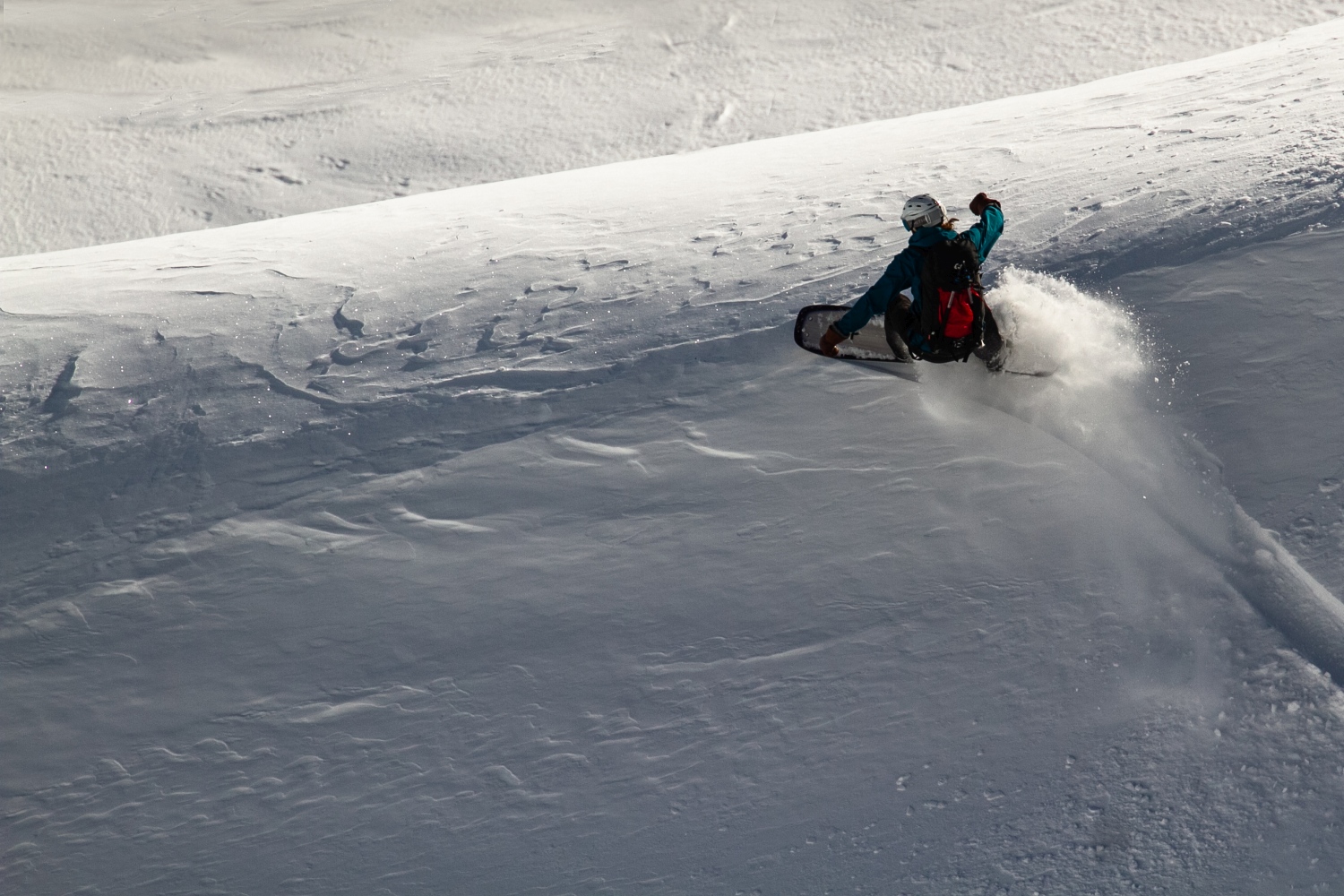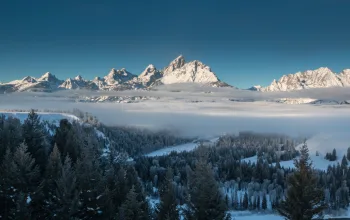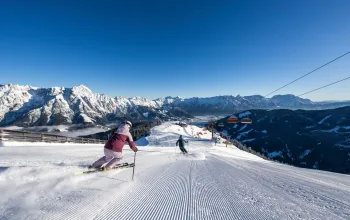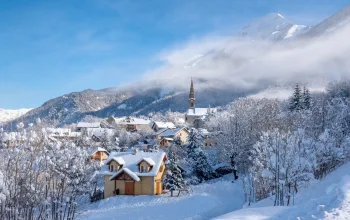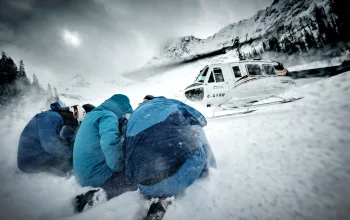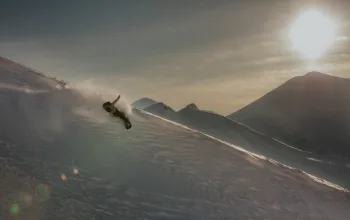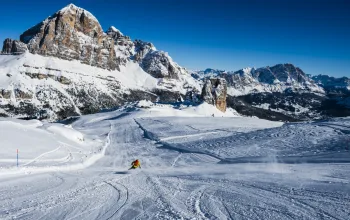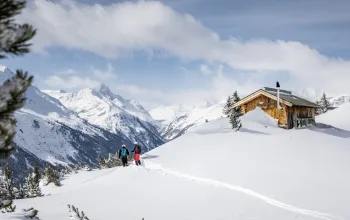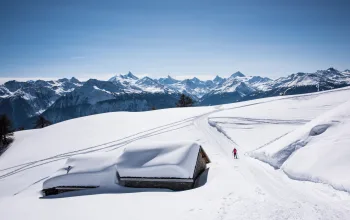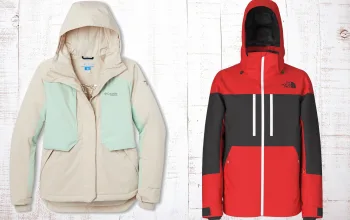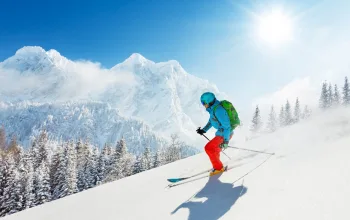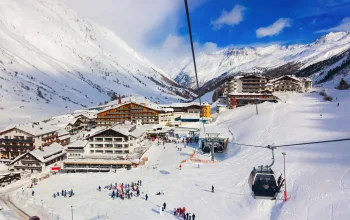It’s been ten days since it last snowed, and yet looking around, you’d never guess it. To my left, my friend Andy Beale has just carved down a shoulder of virgin snow, kicking up the kind of smokey spray you’d expect to find hours after a dump, not weeks. To my right, Stephane Spettel, our guide, leads the rest of the group down another slope with barely a track on it. Beyond them, a cappuccino cloud inversion covers the valley—a white, frothy sea lapping up against the distinctive outline of the Mont Blanc massif in the distance.
We’re in Val Thorens, one of the resorts which makes up the Trois Vallées. By most measures, this is the largest lift-linked ski area in the world, with seven major resorts connected by 158 lifts and more than 600 km of pistes. The area’s wide-open, motorway-style slopes can accommodate vast numbers of skiers. Around a million visit Val Thorens alone each winter. They’re complemented by a network of industrial-sized cable cars and super-modern chairlifts designed to distribute people around the mountains efficiently, with minimal queues, even in peak season.
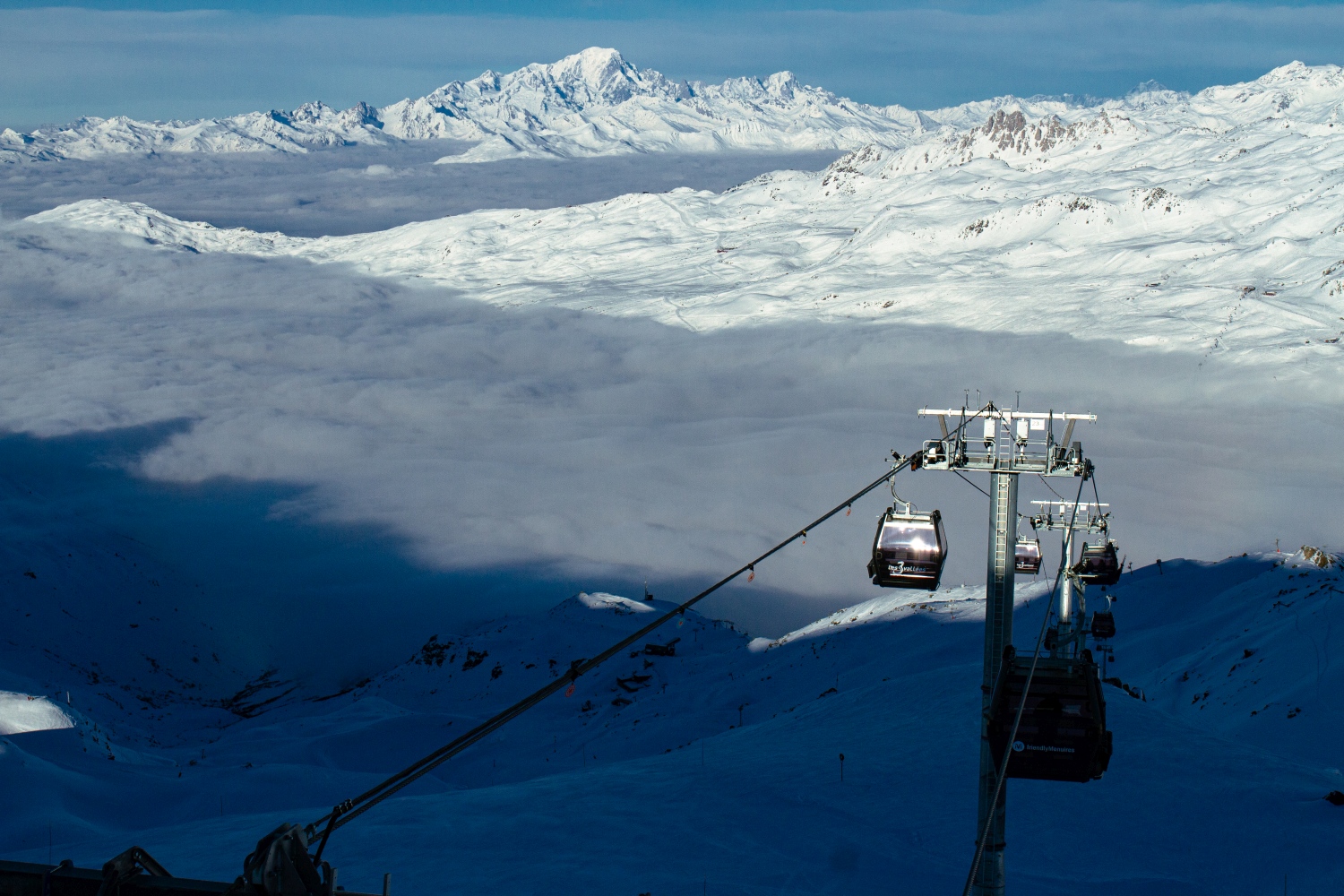
For those familiar with the French Alps, Val Thorens is pretty much the definition of the beaten track. But the sheer size of the lift network also means it’s a great place to explore off-piste. The amount of accessible terrain is vast. We’ve decided to improve our chances of finding fresh snow further still with a lift-assisted ski touring package. With Stephane as our guide, we’ll spend a long weekend riding to the furthest extent of the lifts—and then strapping climbing skins onto our skis and splitboards to head deeper into the backcountry. It’s a combination that promises maximum powder for minimum effort.
Now in his mid-50s, Stephane has been skiing here for more than half his adult life. He knows exactly where to sniff out the best snow, and give guests like us a fresh perspective on the area. Val Thorens has an added advantage over the other Trois Vallées resorts, he explains, because of its altitude. At 2,300m above sea level, the village is the highest resort in France, and its highest skiable peaks, Cime Carron and Pointe de Bouchet, are both above 3,200m. Higher slopes mean lower temperatures, which help to keep snow soft even weeks after a dump. When we visit, it’s certainly cold. Bloody cold, in fact.
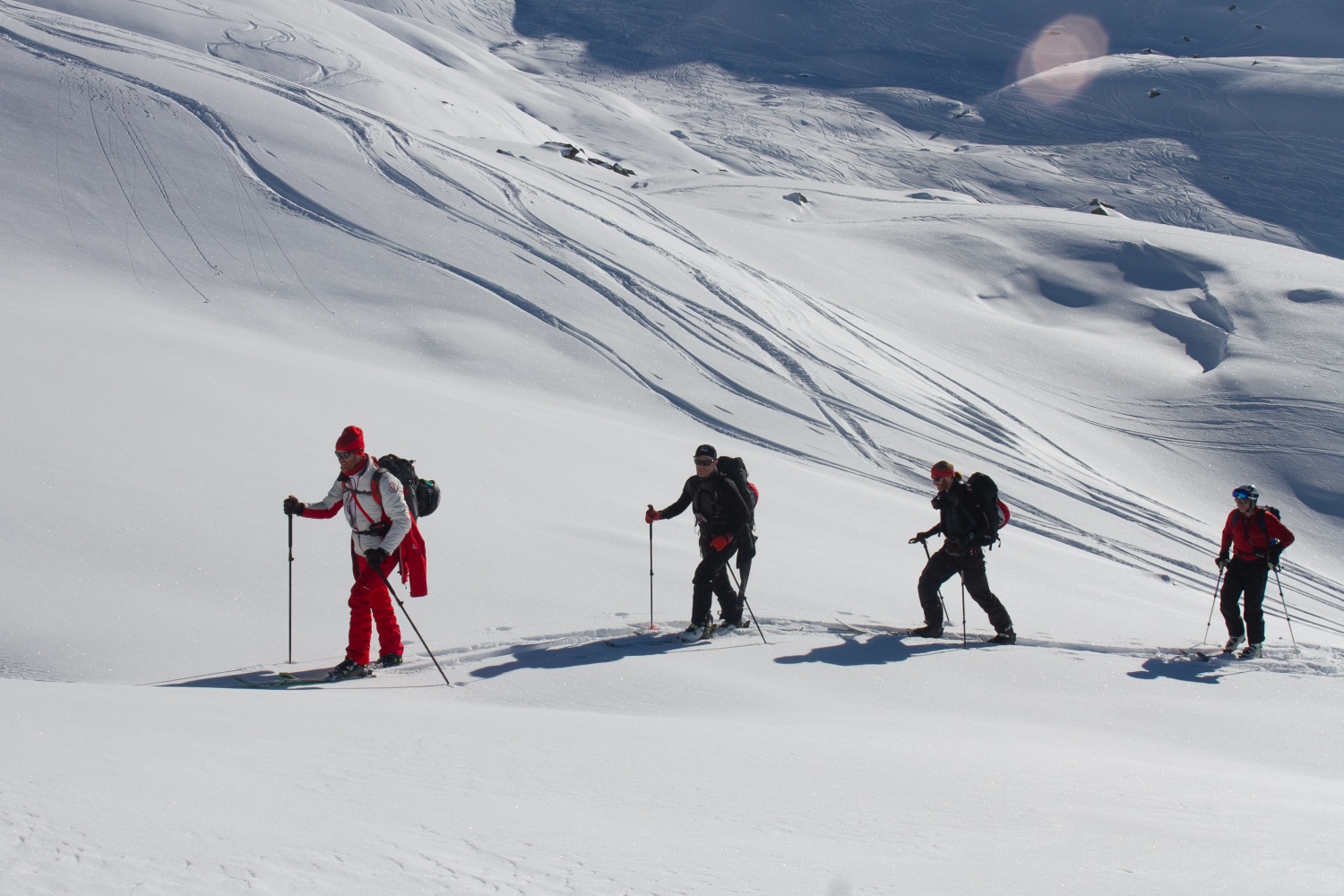
New lines to learn
“I think it must be about minus 20, with windchill on top,” says Seb Ramsay, grimacing and laughing at the same time as we step off the Moraine chairlift on our first morning. Like the rest of our group—Andy, Jonny Richards, Tom Herbst, and me—Seb is a well-travelled skier. Chatting the previous night we worked out that between us, we’ve ridden everywhere from Canada to Kazakhstan. But none of us was expecting it to be quite this cold in familiar ol’ Val Thorens.
“It's So cold, it's not hard to imagine how poor Pierre Lory froze to death”
We fumble to get our skins on without removing inner gloves, battling the wind, and the cold in our fingers. Our objective for the morning is the Col Pierre Lory, named for a priest who used to cross it regularly, serving villages on either side. “Then one day he didn’t arrive,” says Stephane. “They found his body when the snow melted the following spring.” Luckily for us, Stephane sets a quick pace and we’re soon warming up—becoming less likely to share poor Pierre’s fate with each successive swish of our skis. But it’s not hard to imagine a man freezing to death up here. “Also, you have to remember that even 25 years ago, the top of this valley looked very different,” says Stephane. He points out the tongue of a glacier to our left. “We have lost 20 to 25m of depth in the ice here, in just 20 years,” he says, “and mostly, in the last five years”.
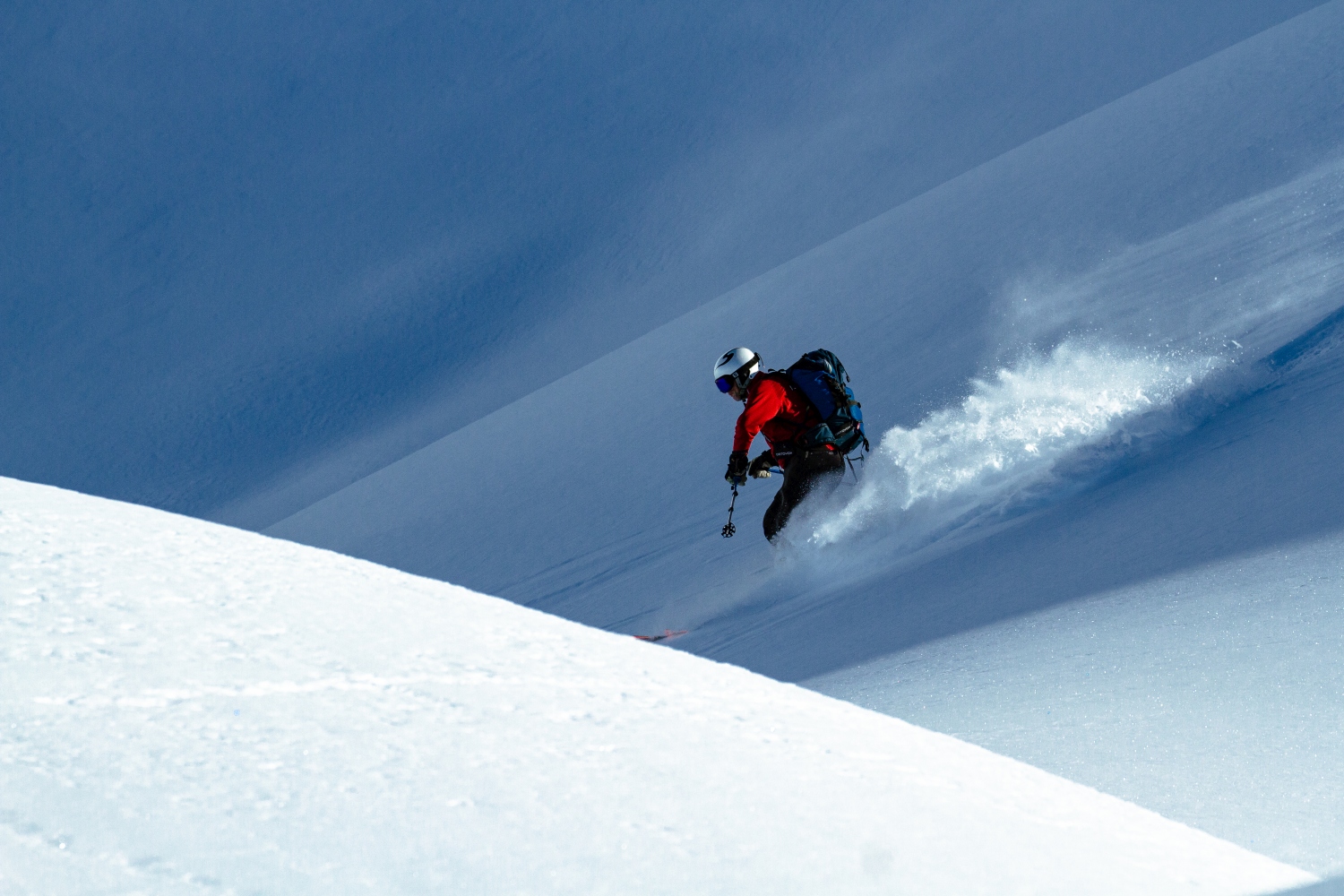
The cold snap that coincides with our visit is just that—a snap. As global average temperatures rise, not even Val Thorens’ height has spared it from the ravages of the climate crisis. The valley we’ve just climbed used to be served by a T-bar, Stephane says, but after moving it once to accommodate the shifting ice, the resort eventually took it down when the tow ropes no longer reached the snow. He points out the old arrival hut, clinging precariously to what’s now a rocky outcrop, high to our right. We push on, riding down a short pitch before climbing again, in the sunshine this time, towards our objective. From the Col Pierre Lory, there’s a long, mellow, descent beneath the Pointe du Bouchet. It might not be enough to save the glaciers, but the recent cold has preserved the snow here perfectly, keeping the crystals light and fluffy. By the time we arrive for lunch at Restaurant La Moutiere, sandwiched between two pistes, we’re not just well warmed up, we’re grinning like Cheshire cats.
If our lunch spot on the first day is a treat, our accommodation that night is more special still—although we take our time reaching it. Lingering too long on our final descent to shoot photos of Mont Blanc with the cloud inversion means that by the time we reach the valley floor the streetlights are on in the village of Saint-Marcel. We climb the last 300 vertical metres to the Refuge Le Trait d’Union with head-torches on, their beams catching our breath in the cold night air.
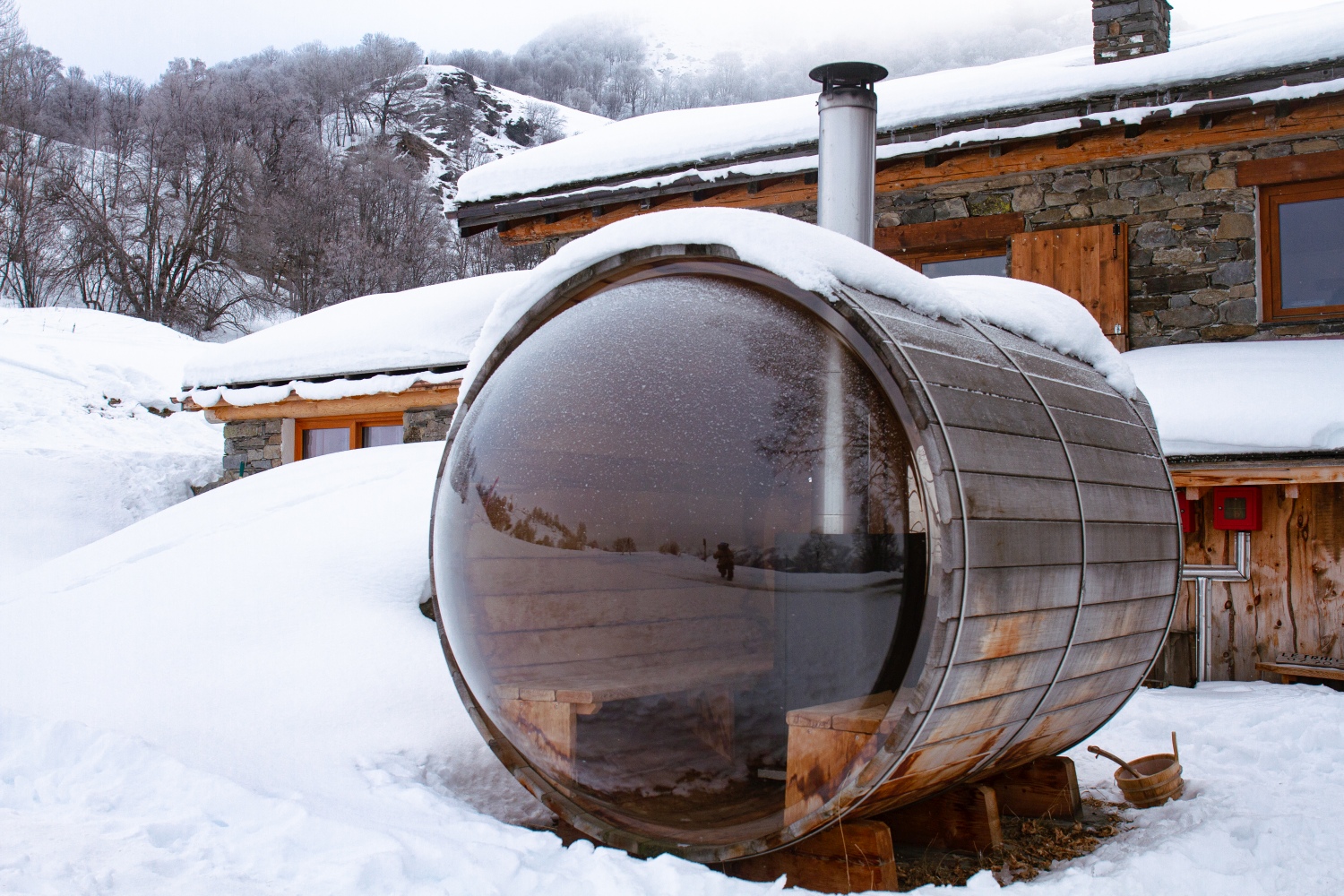
We arrive with six pairs of knackered legs, one ski pole that’s frozen shut, and another that’s broken clean in half. But our exhaustion only makes the welcome from our host, Viviane Hudry, feel all the warmer. The refuge is the definition of cosy, with hand-crocheted cushions, vintage furnishings, and a crackling wood-fired stove. On the table, Viviane has laid out long forks, cast-iron pans, and plates of charcuterie which tell us its fondue for dinner. Perhaps best of all, unlike in many mountain huts, there’s a warm, hot shower.
Le Trait d’Union was a complete ruin when Viviane and her husband Jean-Luc bought it in 2004, she explains. A framed picture shows the crumbled remains of the original four walls, their stones scattered by trees growing through the middle. Having restored it beautifully, they initially kept it as a private residence. “We used to come up here every weekend, with our friends, with our family,” Viviane says. “We had lots of fun, lots of parties—so many special moments”. But in 2016, Jean-Luc died.
Initially, Viviane says, she wasn’t sure what to do with the place. The air was so thick with memories. “But then I decided to continue to live, and so I opened it up to other people. I thought it would be nice that others could come and experience all the happy memories and the love that had been invested in this place. And they could make their own happy memories, and bring their love here.” The name she chose, Trait d’Union, means 'the hyphen', or 'the line that unites'. “For me, it symbolises the link between its past incarnation and the present,” says Viviane. “It’s the connection that still exists between me and Jean-Luc.”
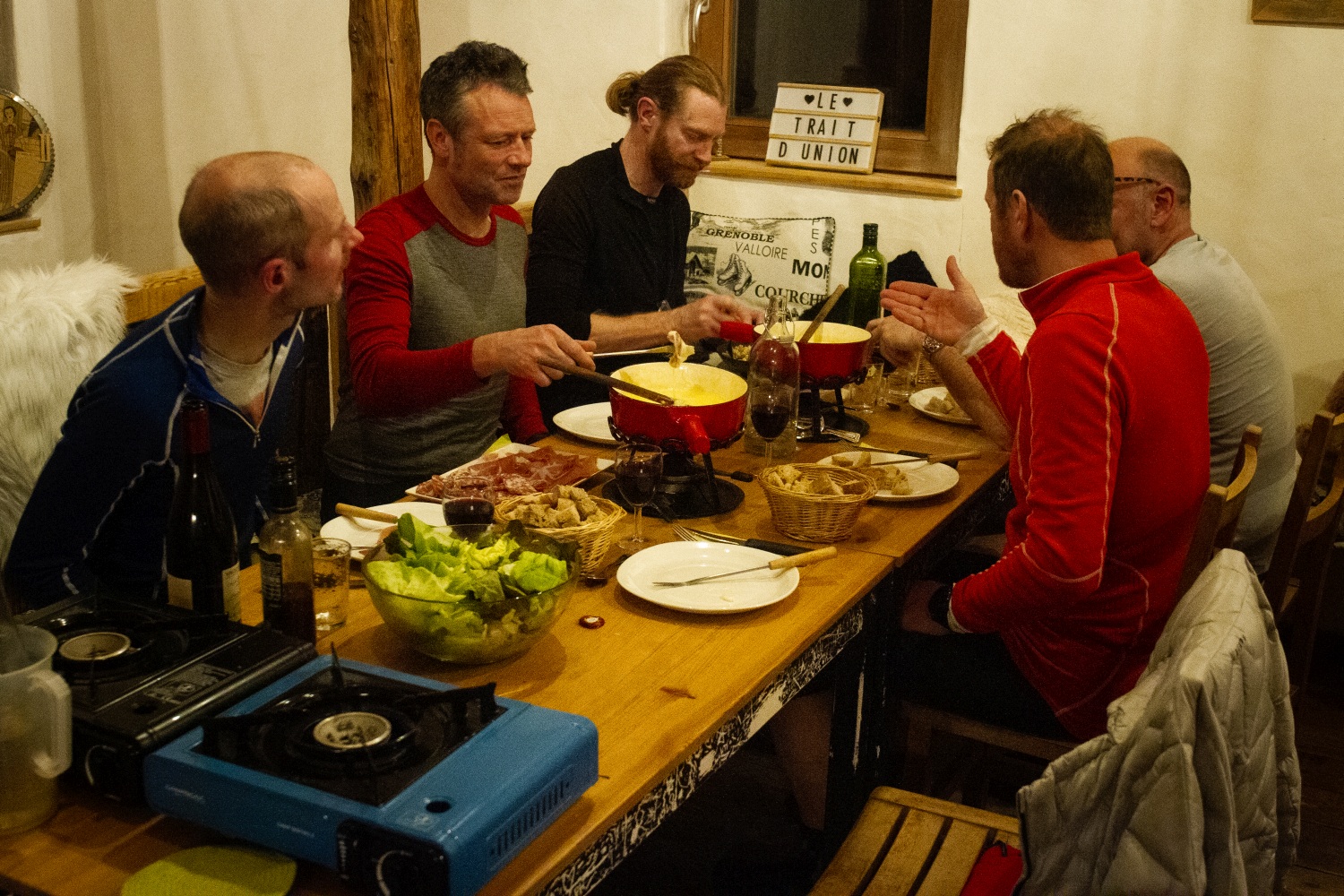
Having eaten deliciously well, consumed a carafe or two of local wine, and headed to bed early, we awake the following morning feeling refreshed and restored. One advantage of lift-assisted ski touring, and staying in refuges like this, a short skin away from the slopes, is that supplies are easy to come by. Viviane, who lives down in Saint-Marcel, has been to the bakery that morning, and arrives bearing fresh croissants.
Another advantage is proximity to ski shops when you need spares. After breakfast Stephane helps Seb whittle a wooden splint for his broken ski pole. It’s a clever repair job, but it wouldn’t survive a hard day’s touring. Luckily, it doesn’t need to. We’ll be passing through a village to catch a lift within an hour of setting out. My splitboard pole, meanwhile, which jammed shut continuously in the cold the previous day, is fixed with a splash of Viviane’s olive oil—in lieu of WD40.
The cold is cruel on kit, however, and by the time we reach our lunch spot in Les Menuires, I’ve developed another mechanical: my splitboard binding strap has snapped. If this happened on a remote descent halfway through the Haute Route, it would probably spell disaster. But because we’re winding our way in and out of the Trois Vallées’ various villages, it’s the work of half an hour to find a friendly InterSport shop that stocks the necessary spares. Augustus, the elderly ski technician, digs out a replacement and files the screw down to size in seconds—fixing the problem in a shower of sparks.
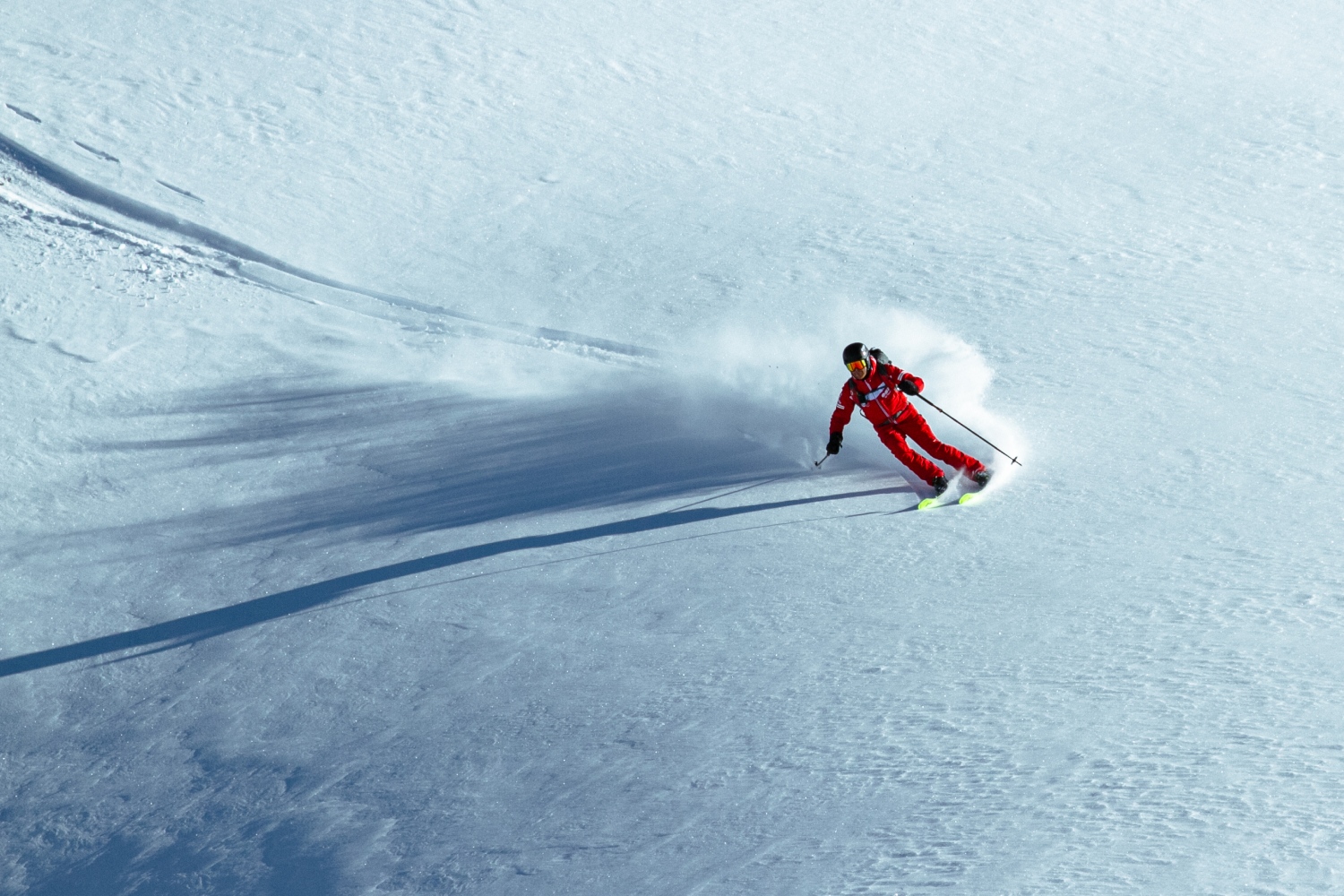
It’s just as well, because Stephane has big plans for our final day. After spending a night in the Refuge de Lac de Lou—another backcountry hut relatively close to the slopes—we ride the Pointe de la Masse cable car up to the peak of the same name. From here, a new viewing platform offers breathtaking views over the Alps. This time however, we don’t dawdle, instead skiing quickly around the top of a ridge towards the Col de Monfiot, before strapping on skins to climb to the Col de la Grande Combe, at the head of the next valley over.
“IT's like an all-you-can-eat buffet of powdery delights, just for us”
We're greeted by an all-you-can-eat buffet of powdery delights, with couloirs of every size and shape imaginable feeding down into a vast, open bowl. There are tracks criss-crossing the run-out (it’s now been 12 days since the last snowfall, after all) but many of the upper pitches remain untouched. Frothing with excitement, each member of the group picks out a different line, taking it in turns to skin carefully across to our chosen drop in point, before gorging ourselves on the descent.
That evening, as we sink pints at the stylishly-refurbished bar of the Fahrenheit Seven Hotel, in the centre of Val Thorens, it feels like we've stepped into a different world. Sure, we’ve been in a ski resort the whole time, but it hasn’t felt much like it. We’ve probably never ventured more than five kilometres from the closest lift, and yet the terrain we’ve been treated to, and the snow we’ve ridden, feel like the kind of thing you’d normally find only on far-longer backcountry missions. Using lift assistance has meant we’ve covered a ridiculous amount of ground too. According to Strava, we’ve ridden 72 kilometres in three days, and ‘climbed’ more than 6,500 vertical metres. It’s been one hell of a long weekend. And yet as we pore over the maps tracing out our travels, it’s clear that we’ve barely scratched the surface of what this vast area has to offer.
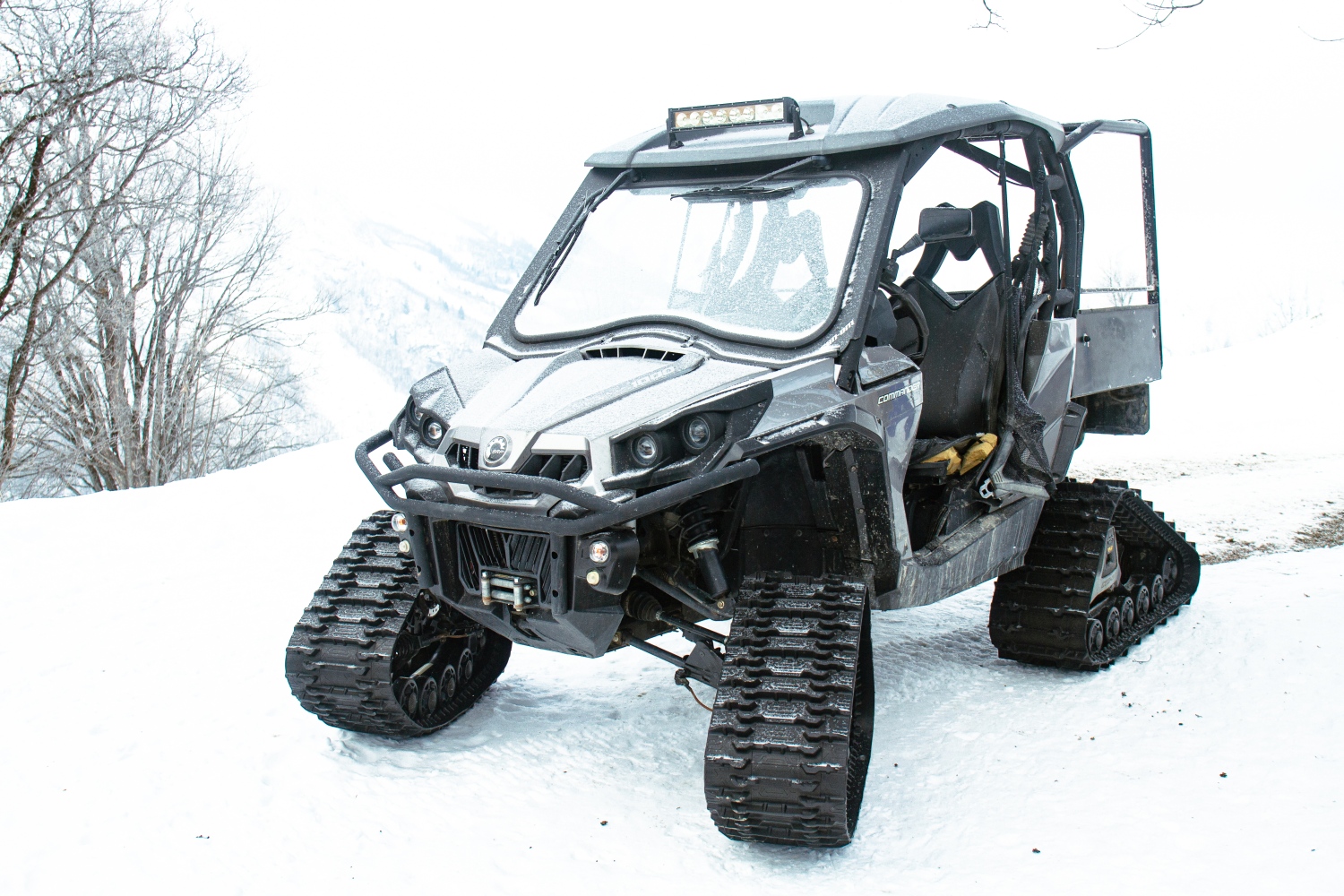
Snowhow
Our trip
Tristan's trip was supported by the VT Tourist Office, who can organise similar packages from around 1,800 euros per person.
Where to stay
In town, the Farenheit Seven Hotel, voted "best ski hotel in France" has recently been refurbished in mid-century modern style. Up the hill, try Trait d'Union and Lac de Lou.
Getting there
Travelling by train from London to Moutiers or Modane is easy, with one change in Paris. From Modane, it's a short taxi to Orelle which is linked to VT by cable car; from Moutiers it's a minibus taxi.



